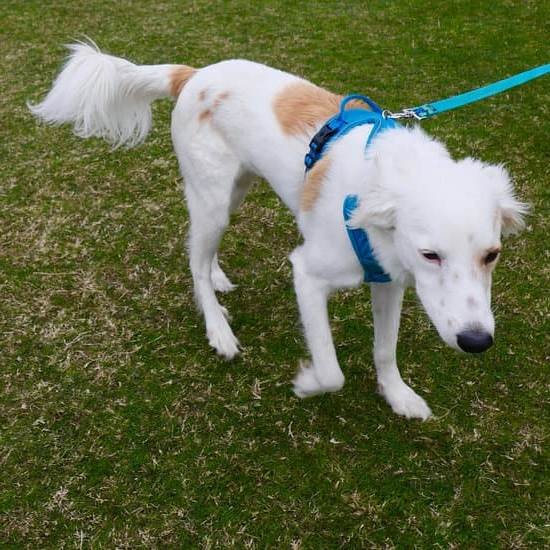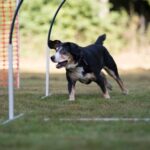Training your dog for family protection is an essential step in ensuring the safety and security of your loved ones. In this article, we will explore the importance of training your dog for this specific purpose, highlighting the benefits it brings to your household.
Having a protective dog can provide you with peace of mind knowing that your family has an extra layer of security. A well-trained family protection dog can deter potential threats and provide assistance during emergencies. Whether it’s deterring intruders or alerting you to potential dangers, a trained dog can be a valuable asset to your family’s safety.
Choosing the right dog breed plays a crucial role in effective family protection training. Certain breeds are naturally inclined towards protective instincts and exhibit traits that make them ideal for this purpose. We will discuss different breeds and provide recommendations on suitable options known for excelling in family protection.
Training a dog for family protection goes beyond teaching basic obedience commands. It requires assessing your dog’s temperament and personal qualities to ensure they have the necessary attributes to excel in protective training. We will explore how to evaluate these qualities and tips on identifying desirable traits such as courage, loyalty, and intelligence.
By investing time and effort into training your dog for family protection, you can establish a secure environment for your loved ones while enjoying the companionship of a loyal companion.
In the following sections of this article, we will delve deeper into the specific steps involved in training your dog for family protection, including basic obedience training, building strong bonds with your canine partner, advanced techniques for enhancing protective instincts, socialization strategies, reinforcement methods, common mistakes to avoid, and ultimately achieving peace of mind through having a well-trained family protection dog.
Choosing the Right Dog Breed for Family Protection
When considering training your dog for family protection, it is crucial to choose the right breed that has natural protective instincts. Not all dog breeds are suitable for this purpose, as some may lack the necessary temperament and physical qualities to be an effective protector. In this section, we will discuss different dog breeds that excel in family protection and provide recommendations on the most suitable ones.
Recommending Protective Dog Breeds
There are several dog breeds known for their protective nature and ability to guard families. These breeds have inherent traits such as loyalty, courage, and intelligence that make them ideal candidates for family protection training. Here are some recommended protective dog breeds:
- German Shepherd: Known for their versatility, German Shepherds are intelligent and highly trainable dogs that excel in various roles, including family protection. They have a calm demeanor but can quickly switch into action when needed.
- Rottweiler: Rottweilers are powerful yet gentle giants that possess a natural guarding instinct. With proper training and socialization, they can become excellent family protectors.
- Doberman Pinscher: With their sleek appearance and high energy levels, Dobermans make formidable protectors. They are fiercely loyal to their families and exhibit vigilance in guarding them.
- Belgian Malinois: Originally bred as working dogs, Belgian Malinois are known for their drive and agility. They possess a strong protective instinct coupled with intelligence and trainability.
It’s important to note that while these breeds generally excel in family protection, individual temperaments may vary. It’s essential to spend time researching each breed’s characteristics and consulting with experts or reputable breeders to find a suitable match for your specific needs.
Matching Your Lifestyle
In addition to considering the breed’s protective qualities, it’s crucial to choose a dog breed that matches your lifestyle and environment. Some protective breeds require more physical exercise and mental stimulation to thrive, while others may be content with less rigorous activity. Assess your daily schedule, living arrangements, and available resources to ensure that you can provide the necessary care and environment for a protective dog breed.
By thoroughly researching and selecting a suitable breed based on its natural protective instincts and compatibility with your lifestyle, you will set a strong foundation for successful family protection training. Remember that training is not an overnight process but rather a long-term commitment that requires patience, consistency, and dedication.
Evaluating Your Dog’s Temperament and Personal Qualities
The Importance of Assessing Your Dog’s Temperament
Before embarking on training your dog for family protection, it is crucial to evaluate your dog’s temperament. The success of the training largely depends on your dog’s personality and innate characteristics. By understanding your dog’s temperament, you can tailor the training methods to suit their individual needs and maximize their potential as a protective companion.
Assessing your dog’s temperament involves observing their behavior in various situations and environments. Look for signs of courage, confidence, and alertness, as these qualities are essential for a successful family protection dog. Additionally, consider their level of sociability towards both familiar people and strangers. A good family protection dog should be friendly and accepting of trusted individuals while displaying wariness towards strangers.
Identifying Desirable Qualities in Your Dog
To evaluate your dog’s personal qualities, pay attention to their willingness to learn and follow commands. Dogs with high intelligence and trainability tend to excel in protective roles. Loyalty is also an important trait to consider. A loyal dog will naturally prioritize the safety of their family members and demonstrate unwavering devotion.
Another quality to assess is adaptability. Family protection dogs should be able to adjust quickly to new situations or environments without becoming fearful or anxious. Confidence is equally important; a self-assured dog will be more effective in protecting your loved ones without displaying unnecessary aggression.
During the evaluation process, it can be helpful to consult with a professional trainer or behaviorist who specializes in working with protective breeds. They can provide expert guidance in assessing your dog’s temperament accurately and offer recommendations on the most suitable training techniques.
Tips for Identifying Temperament Traits
When evaluating your dog’s temperament and personal qualities, there are several tips to keep in mind:
- Observe your dog’s reactions: Pay close attention to how they respond to unfamiliar sounds, people, or situations. Look for signs of curiosity, confidence, and a willingness to investigate.
- Assess their body language: Observe your dog’s posture, tail position, and ear movements. A relaxed body posture with an alert expression is indicative of a confident and attentive dog.
- Conduct temperament tests: Consider administering temperament tests that evaluate your dog’s reactions to different stimuli. These tests can help you understand how your dog responds in various scenarios and identify any potential issues that need to be addressed during training.
Remember, not all dogs are suitable for family protection training. If you find that your dog lacks the necessary temperament traits or shows signs of aggression towards loved ones, it may be best to seek alternative training options or consult with a professional trainer for guidance.
Basic Obedience Training
Basic obedience training is an essential foundation for training your dog for family protection. It not only helps your dog understand and respond to commands but also establishes you as the leader and reinforces your dog’s discipline. By mastering basic obedience commands, your dog will be better equipped to follow through with advanced family protection training.
To begin basic obedience training, start with simple commands such as “sit,” “stay,” and “come.” These commands are crucial for controlling your dog’s behavior in various situations. Use positive reinforcement, such as treats or praise, to reward your dog when they correctly execute a command. Consistency is key – practice these commands regularly in different environments to ensure that your dog understands them in any situation.
Here are some essential commands and how to teach them effectively:
- Sit: Start by holding a treat close to your dog’s nose, then slowly move it upwards while saying the word “sit.” Your dog’s natural response would be to lower their rear end onto the ground. Once they are seated, give them the treat and praise them.
- Stay: Begin by asking your dog to sit. Open your palm towards their face and say “stay” while taking a step back. If they maintain their position after a few seconds, return to them, reward them with a treat, and offer praise.
- Come: Attach a long leash to your dog’s collar for this command. Start in an enclosed area like your backyard or living room. Squat down and call out their name followed by the command “come” while gently pulling on the leash towards you. When they reach you, reward them with treats and praise.
Remember that patience is key during basic obedience training sessions. Keep them short but frequent (about 5-10 minutes) throughout the day rather than one long session. Gradually increase the difficulty by practicing in distracting environments or adding more complex commands once your dog has mastered the basics.
By establishing a strong foundation in basic obedience training, you are setting the stage for successful family protection training. With time and consistent practice, your dog will become better prepared to fulfill their role as a protector of your family.
Building Strong Bonds and Trust with Your Dog
Building a strong bond and trust with your dog is crucial when training them for family protection. This bond serves as the foundation for successful training and ensures that your dog will be dedicated to protecting your family. Here are some techniques and exercises you can use to foster that bond and enhance communication with your dog:
- Spend Quality Time Together: Set aside dedicated time each day to spend with your dog. Engage in activities that they enjoy, such as playing fetch or going for a walk. This not only strengthens the bond between you and your dog but also helps them associate positive experiences with you.
- Positive Reinforcement: Use positive reinforcement techniques throughout your training sessions to reward good behavior. Rewarding your dog with treats, praise, or playtime will reinforce their trust in you as their provider and leader.
- Regular Training Sessions: Consistency is key when building a bond with your dog. Schedule regular training sessions where you focus on teaching and reinforcing commands, as well as practicing exercises related to family protection.
- Communication: Pay attention to your dog’s body language and vocalizations to understand their needs and emotions better. By actively listening and responding appropriately, you demonstrate to your dog that you value their feelings and want to establish clear communication.
- Trust-Building Exercises: Engage in trust-building exercises such as hand-feeding, grooming, or touch sensitivity exercises where you desensitize your dog gently to being touched in sensitive areas like paws or ears.
- Play Interactive Games: Incorporate interactive games like hide-and-seek or puzzle toys into your routine. These games stimulate mental engagement while reinforcing the bond between you and your dog.
Remember that building a strong bond takes time, patience, and consistency. Be gentle, kind, and understanding towards your dog throughout the process of creating trust so that they feel safe and secure in their role as a protector for the family.
Advanced Training Techniques for Family Protection
Once your dog has established a strong foundation in basic obedience training, you can introduce advanced techniques to enhance their protective instincts. These techniques will allow your dog to assess threats, react appropriately, and ultimately protect your family in potential dangerous situations.
One important aspect of advanced training is teaching your dog to recognize potential threats and respond accordingly. Start by introducing controlled scenarios that simulate real-life situations. For example, have someone approach your home or property in a way that may be perceived as threatening. As your dog begins to display signs of alertness or suspicion, give them the command to bark or growl to indicate their recognition of a potential threat.
Additionally, it is crucial to train your dog on how to physically protect you and your family if necessary. This includes teaching them how to bite and release on command. It’s essential to emphasize that this technique should only be used in cases of extreme danger, as you want your dog to be able to differentiate between real threats and everyday situations.
To properly train biting and releasing commands, it’s recommended to work with a professional trainer who specializes in protection dogs. They will guide you through the process using bite sleeves or specialized equipment designed for this purpose. It’s crucial for both you and your dog’s safety that these exercises are closely monitored and conducted under professional supervision.
Overall, advanced training techniques require patience, consistency, and expert guidance. It is important to prioritize safety throughout the process and seek professional assistance when necessary.
| Technique | Description |
|---|---|
| Threat Recognition | Simulate scenarios where potential threats are introduced |
| Biting on Command | Teach your dog to bite when commanded in extreme cases of danger |
| Releasing on Command | Train your dog to release their grip when commanded to let go |
Socialization
Socialization is a crucial aspect of training a dog for family protection. Dogs need to be exposed to different environments, people, and situations in order to learn how to distinguish between potential threats and friendly individuals. Proper socialization helps ensure that your dog can accurately assess who is a friend and who might pose a danger to your family.
One effective way to socialize your dog is by introducing them to various environments early on. Exposing your dog to different settings such as parks, busy streets, and crowded areas can help them become comfortable with unfamiliar surroundings. Gradually increase the level of exposure and provide positive reinforcement when they exhibit calm behavior in these new environments.
Introducing your dog to a variety of people is also important for socialization. This includes individuals of different ages, ethnicities, and appearances. Encourage interactions with friendly strangers while closely monitoring your dog’s response. Rewarding desirable behavior, such as remaining calm and friendly, will help reinforce positive socialization skills.
In addition, it is essential to expose your dog to different situations that they may encounter in real-life scenarios. This can include encounters with other animals or simulated scenarios where someone approaches or behaves aggressively towards you or a family member. By gradually exposing them to these situations under controlled circumstances, you can help train them on appropriate responses and assistance in family protection.
Ensuring proper socialization will enhance not only your dog’s ability to distinguish friends from foes but also their overall mental well-being. A well-socialized dog is less likely to display fear-based aggression or anxious behavior in unfamiliar situations, making them better equipped for family protection duties.
| Aspect | Importance |
|---|---|
| Exposure | Introducing your dog to different environments, people, and situations for socialization. |
| Positive Reinforcement | Rewarding desirable behavior during socialization to reinforce positive skills. |
| Simulated Scenarios | Creating controlled situations to expose your dog to potential threats and train appropriate responses. |
Reinforcing Training and Continued Education
Once you have successfully trained your dog for family protection, it is important to remember that training should not stop there. Reinforcing the training and providing continued education is crucial for maintaining and refining your dog’s protective skills over time. By consistently reinforcing the training, you can ensure that your dog remains prepared and capable of protecting your family when needed.
One way to reinforce training is through regular practice sessions. Set aside dedicated time each day to go over the commands and exercises you have taught your dog. Continue to practice obedience commands, such as sit, stay, and recall, to keep your dog sharp and responsive. You can also incorporate simulated scenarios into the training sessions to help your dog apply their skills in real-life situations.
In addition to practice sessions at home, exposing your dog to different environments and situations is essential for their continued education. Take them on walks in busy areas with lots of distractions so they learn how to remain focused amidst noises and people.
Introduce them to new people, including friends and strangers, so they become comfortable with a variety of individuals. By gradually exposing them to new experiences, you can help them become well-rounded family protection dogs who can confidently assess threats.
Furthermore, ongoing education in advanced training techniques is beneficial for honing your dog’s protective instincts even further. Consider enrolling in advanced obedience classes or seeking guidance from professional trainers who specialize in protection dogs. These trainers can teach you additional techniques for enhancing your dog’s abilities and further developing their protective instincts.
By reinforcing training through regular practice sessions, exposing your dog to new environments and situations, and seeking continued education in advanced techniques, you can ensure that your family protection dog remains skilled and reliable over time. Remember that consistency is key in maintaining their abilities. With dedication and ongoing effort, you can enjoy the peace of mind knowing that you have a well-trained companion who will protect your loved ones when it matters most.
Common Mistakes to Avoid While Training Your Dog for Family Protection
Training a dog for family protection is a complex and important task that requires commitment, consistency, and knowledge. However, there are common mistakes that many dog owners make during the training process. By being aware of these mistakes and learning how to avoid them, you can ensure more successful results in training your dog for family protection.
One common mistake is inconsistency in training. Dogs, especially those trained for protection, thrive on routine and clarity. Inconsistent commands or rules can confuse your dog and hinder their progress. It is essential to establish consistent expectations and enforce them consistently. Set aside dedicated time each day for training sessions and stick to a regular schedule.
Another mistake to avoid is using punishment-based or harsh training methods. Training should be based on positive reinforcement rather than fear or punishment. Dogs respond much better to rewards and praise for good behavior, which helps build trust and strengthen the bond between you and your dog. Punitive methods can lead to fear or aggression issues in your dog, which is counterproductive when training for family protection.
A third mistake is neglecting socialization during the training process. Socializing your dog with different environments, people, and situations is crucial for their development as a well-rounded family protection dog. Failing to expose your dog to various social stimuli can result in fear or anxiety-related behaviors later on. Make sure to gradually introduce your dog to new experiences while providing positive reinforcement throughout the process.
By avoiding these common mistakes, you can set up a solid foundation for successful training of your dog as a family protector. Consistency, positive reinforcement, and proper socialization are key factors in shaping your dog into a reliable guardian for your loved ones. Remember that patience and dedication are essential throughout the entire process of training your dog for family protection.
Conclusion
In conclusion, training your dog for family protection is essential for the safety and well-being of your loved ones. Throughout this article, we have explored various aspects of training, from choosing the right breed to advanced techniques and socialization. By following the guidelines provided, you can enjoy peace of mind knowing that your well-trained dog is ready to protect your family.
One key aspect emphasized throughout this article is the importance of establishing a strong bond and trust with your dog. Building a solid relationship based on mutual respect and understanding will not only enhance communication but also strengthen their protective instincts. Techniques such as regular exercise, playtime, and positive reinforcement can help foster this bond.
Additionally, ongoing education and consistent reinforcement are vital in maintaining and refining your dog’s protective skills over time. Dedicate time to regularly practice commands and introduce new challenges to keep their skills sharp. By avoiding common mistakes detailed in this article, you can ensure effective training that leads to successful results.
Frequently Asked Questions
Can you train a dog to be protective of you?
Yes, it is possible to train a dog to be protective of you. This type of training typically involves teaching the dog to recognize potential threats and respond appropriately.
It starts with building a strong bond between the owner and the dog through positive reinforcement techniques. With consistent training and socialization, the dog can learn to differentiate between normal situations and threatening ones, and react accordingly.
How do I train my dog to be a personal protection dog?
Training a dog to be a personal protection dog requires specialized skills and techniques. It is recommended to seek professional help from experienced trainers who specialize in protection training.
These trainers will assess the dog’s temperament, determine its suitability for this type of training, and guide you through the process. The training usually involves obedience work, bite work (with the use of specific equipment), and scenario-based simulations that simulate real-life situations where the dog needs to protect its owner.
Can a protection dog be a family pet?
Yes, a protection dog can also be a family pet under certain circumstances. While these dogs are trained for protection, they can still exhibit loving and affectionate behavior towards their families. However, it’s crucial to remember that they require continued training, socialization, and mental stimulation in order to maintain their skills as well as ensure they understand boundaries within a family setting.
Moreover, households with children should take extra precautions when introducing younger family members to a protection-trained dog due to their heightened instincts and potential for more assertive behavior. Responsible ownership is key when integrating a protection-trained dog into a family dynamic as it requires ongoing commitment and management to maintain both safety and harmony within the household.

Welcome to the blog! I am a professional dog trainer and have been working with dogs for many years. In this blog, I will be discussing various topics related to dog training, including tips, tricks, and advice. I hope you find this information helpful and informative. Thanks for reading!





